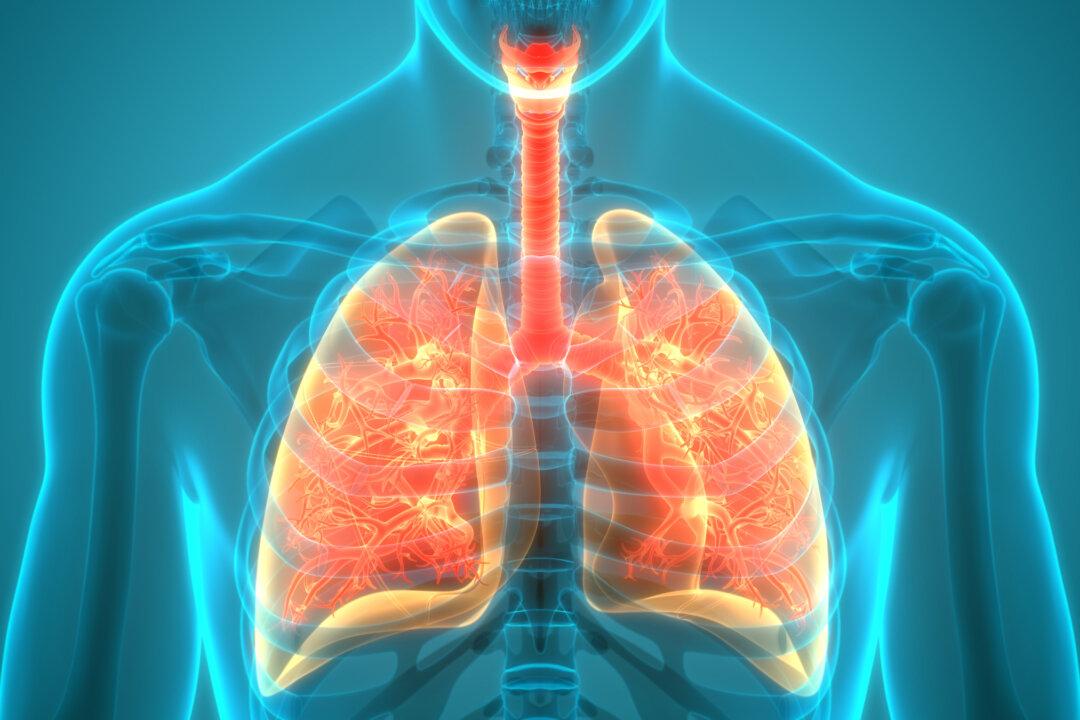Scientists have upended decades of conventional wisdom about human lung development, with new research showing that lung function begins declining immediately after peaking in the early 20s, which is much earlier than previously believed.
The findings combine data from more than 30,000 people across Europe and Australia and reveal distinct differences between men and women in how and when lung capacity peaks.
“Honestly, it’s pretty surprising—and a little concerning to learn that lung function may start declining right after it peaks in our early 20s,” Dr. Raj Dasgupta, who is quadruple-board certified in pulmonary, sleep, internal, and critical care medicine, told The Epoch Times.
Previously, it was believed that lung function steadily increased until reaching a peak at about age 20 to 25, after which it remained stable for years before gradually decreasing with age. However, this understanding was based on studies that did not encompass the full lifespan.
2-Phase Development Pattern
The researchers used an analytical approach called an accelerated cohort design to track lung changes across an entire lifespan. By pooling data from eight different community studies, they identified clear patterns in lung development that had previously gone undetected.One key finding shows that lung capacity develops in two phases: a rapid growth phase in childhood, followed by a slower increase until reaching a peak. For women, this peak occurs at about age 20, while men reach their maximum lung capacity at about age 23.
“The decrease ranged from 10 [milliliters per year (mL/year)] to 50 mL/year, albeit with the decreases starting earlier in the present analysis than reported previously,” the authors wrote.
Lung capacity affects how much oxygen we can take in and how well we clear carbon dioxide. Reduced lung capacity can significantly affect quality of life.
Risk Factors Accelerate Decline
The researchers found no evidence that lung function stays stable after reaching its peak. Instead, it begins to decline much earlier than previously thought—starting immediately after the peak age.They also identified important factors that influence lung health throughout life.
People with persistent asthma experience an earlier peak in lung function and maintain lower levels throughout life compared with those without the condition.
If you have asthma, it’s wise to make sure that the asthma is adequately treated, Dr. Norman Edelman, a pulmonologist at Stony Brook Medicine who was not involved in the study, said. “A lot of people with asthma really don’t treat it fully. They just learn to live with some shortness of breath, and that leads to chronic changes.”
Smoking emerged as another significant factor, linked to an accelerated decline in lung capacity beginning at about age 35—compounding the natural decrease that starts much earlier.
There’s evidence that as lung capacity declines, other things that may adversely affect our health can begin to happen, Edelman said.
Protecting Lung Health
While the findings highlight a concerning trend in lung health over time, Edelman emphasized that prevention is still crucial. He said that, unlike some other body systems, most people find it challenging to significantly increase their lung capacity.“People who do intense exercise that stresses the lungs, like underwater swimmers, may increase their lung capacity,” he said. “But in general, a normal person, even an active normal person, doesn’t really increase lung capacity.”
Instead, protecting existing lung capacity should be regarded as essential. Edelman noted that over the course of a lifetime, the lungs are constantly “succumbing to attacks,” because, like our skin, they’re exposed to the environment—from respiratory infections to air pollutants.
“So as people live, the lung is slightly impaired, even though they’re otherwise healthy, and the lung declines,” he said.
Edelman said the best way to prevent declines in lung function is to live a clean, healthy life.
“Breathe clean air. Don’t smoke. Don’t vape,” he said.








